ZEEKR 9X's L3 Autonomous Driving Solution: Should Competitors Follow Suit?
![]() 07/10 2025
07/10 2025
![]() 604
604
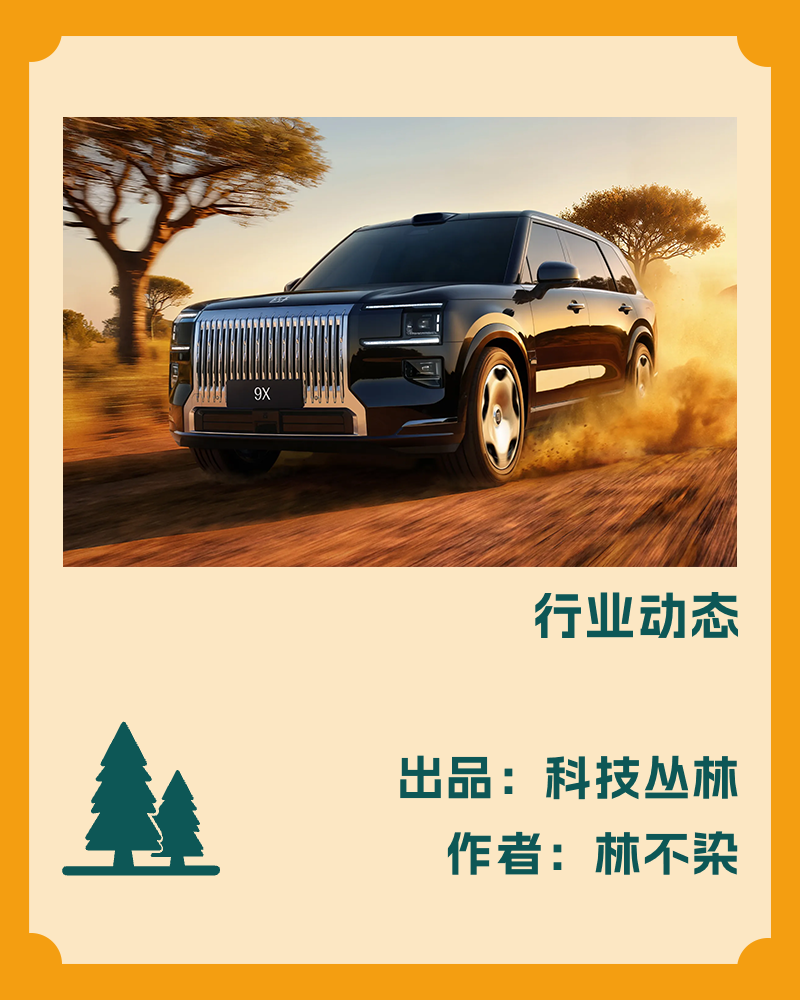
On July 9, ZEEKR unveiled its latest model, the ZEEKR 9X, during a technologically dense yet concise event. Among the many highlights, let's delve into ZEEKR's intelligent driving assistance, particularly its L3 autonomous driving solution, which could serve as a source of inspiration and reference for its competitors.
01 Grand Ocean H9
Previously, Geely consolidated group-level resources for intelligent driving, introducing the Grand Ocean series of solutions to power all its brands. Among these, Grand Ocean H9 represents Geely's L3 strategy. In terms of hardware, ZEEKR employs 43 perception units to achieve triple 360-degree coverage.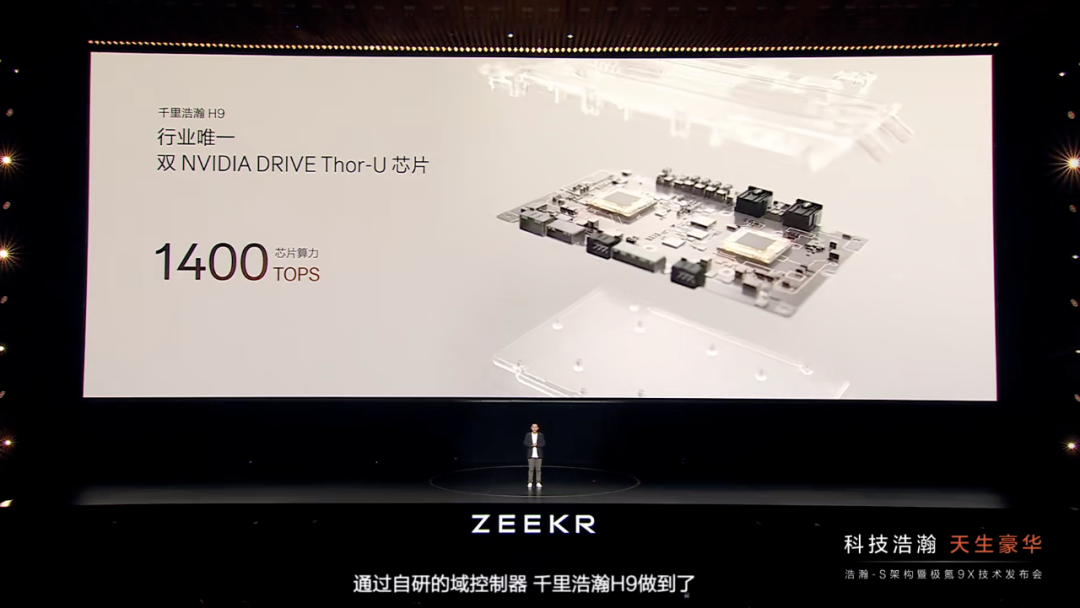
First Layer: 5 LiDARs, including 1 high-resolution 520-line long-range LiDAR and 4 high-precision solid-state LiDARs, ensuring 360° LiDAR coverage.
These four blind-spot LiDARs boast a horizontal scanning range of 150 degrees and a vertical perception range of 112 degrees, with a maximum detection distance of 15 meters. They can also identify suspended obstacles and downward steps.
Second Layer: High-definition cameras. This includes 1 trinocular camera, 4 surround-view cameras, 4 side cameras, 1 rear-view camera, and 1 infrared camera. These 12+1 cameras provide 360° all-around perception.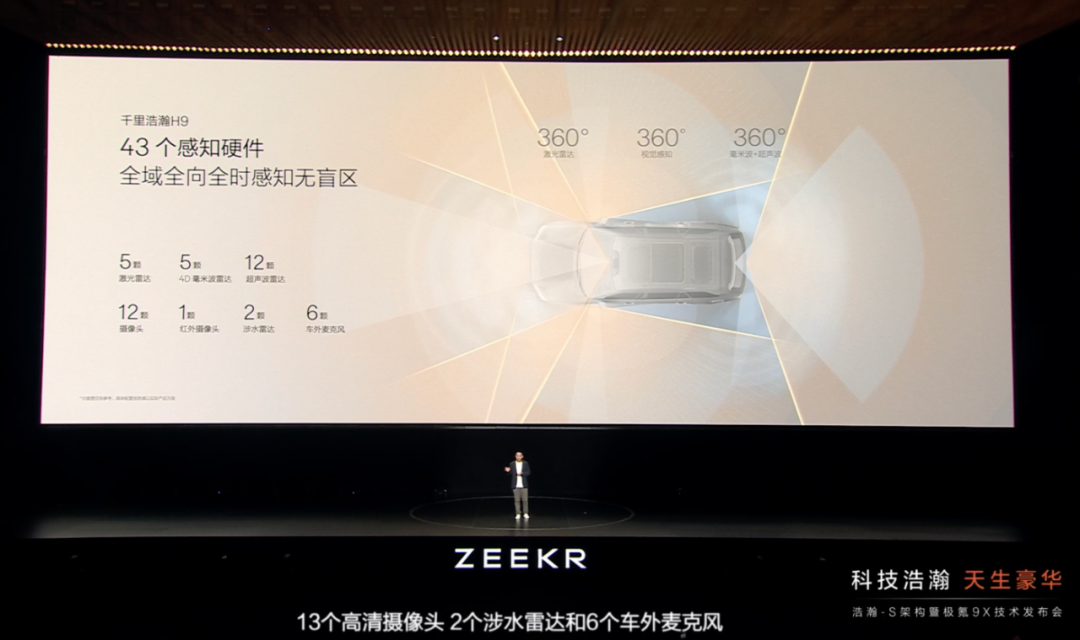
The trinocular camera utilizes a unique fisheye + wide-angle + telephoto solution, adaptable to all lighting conditions and ultra-wide angles, enabling centimeter-level rasterized scene reconstruction.
Third Layer: Millimeter-wave + ultrasonic sensors. This includes 12 ultrasonic radars, 2 fording radars, and 5 4D millimeter-wave radars.
These sensors enable close-range obstacle detection, accurately measuring the distance and direction of obstacles around the vehicle through high-frequency sound waves. Core application scenarios include low-speed driving, reversing, and other parking scenarios, ensuring driving safety.
Clearly, ZEEKR has invested heavily in perception hardware, significantly outpacing its competitors.
This investment ensures perception redundancy, allowing for omnidirectional and continuous perception without blind spots.
02 Computing Power and Algorithm Redundancy
In terms of computing power, ZEEKR equips the vehicle with dual NVIDIA Thor U chips, totaling 1400 TOPS. These chips provide redundancy and dual backup. While this might have been impressive a few months ago, current advancements in the industry have made it less remarkable. XPeng's recently launched G7 boasts over 2000 TOPS, and Tesla's upcoming AI5 will also feature similar computing power. It's evident that intelligent driving assistance has entered an era of exponential growth in computing power.
current advancements in the industry have made it less remarkable. XPeng's recently launched G7 boasts over 2000 TOPS, and Tesla's upcoming AI5 will also feature similar computing power. It's evident that intelligent driving assistance has entered an era of exponential growth in computing power.
Interestingly, NIO has equipped all its models with over 1000 TOPS of computing power redundancy for quite some time, indicating advanced configurations. However, the software has yet to catch up fully. Hopefully, this will change soon. Returning to ZEEKR, at the algorithm level, leveraging Grand Ocean's 23.5 EFLOPS of computing power, ZEEKR has constructed a base large model and a world model in the cloud.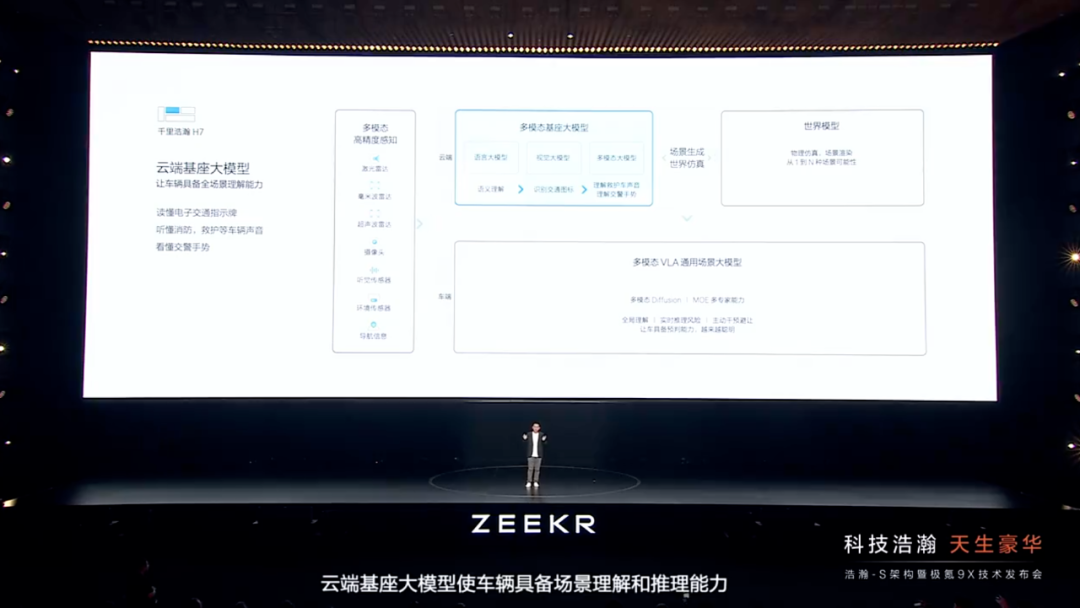
The base large model enables the vehicle to understand and reason about its surroundings, much like a human driver. It can read electronic signs, comprehend the sounds of special vehicles (aided by an external microphone), and even recognize hand gestures of traffic police.
The world model, on the other hand, serves as an infinite virtual test track, replicating complex real-world scenarios. It allows the base large model to undergo reinforcement learning within the world model, training AI with AI, thereby enhancing the intelligence of assisted driving over time.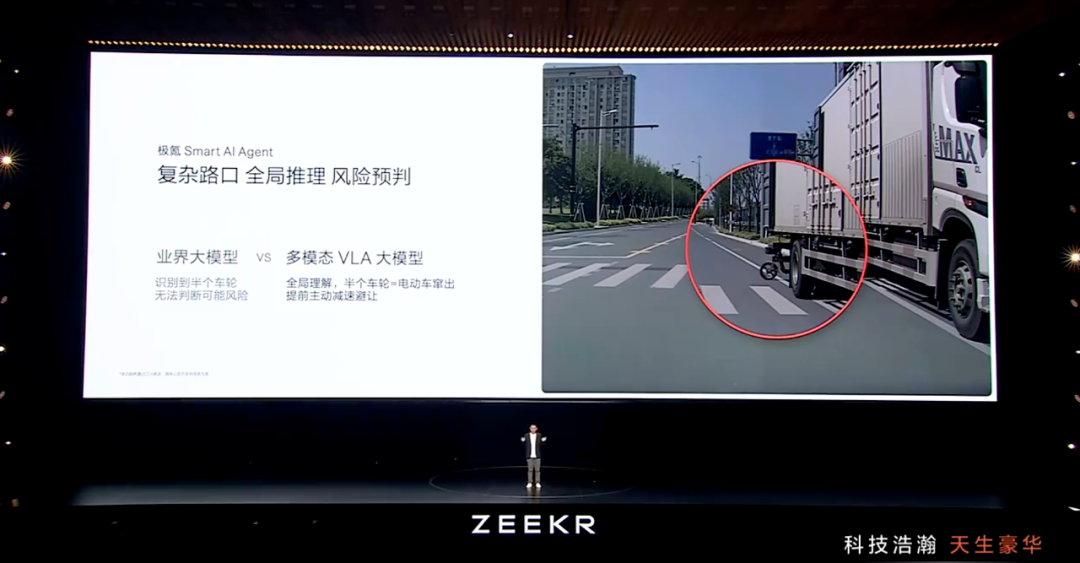
"To illustrate, consider a complex entrance scenario where a large vehicle blocks the view of an electric vehicle behind it, revealing only half a wheel. In such a situation, an ordinary large model might fail to interpret this half wheel, posing a risk of a sudden vehicle emergence. However, the VLA large model, employing a multi-modal algorithm, can anticipate risks through global reasoning, much like an experienced driver, causing the vehicle to actively decelerate and avoid obstacles."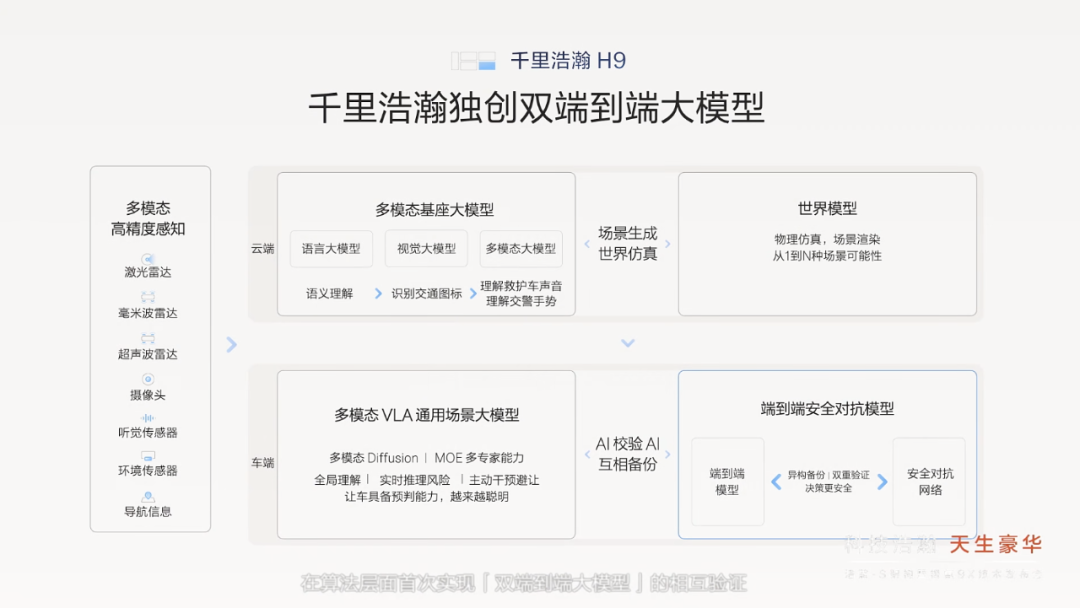
To ensure the safety baseline for L3, ZEEKR has also implemented algorithm redundancy at the vehicle level. Building upon the multi-modal VLA large model, ZEEKR has deployed an end-to-end safety adversarial model. This achieves mutual verification of end-to-end large models at the algorithmic level. Even if one model fails or makes an erroneous decision, the other can swiftly provide an optimal solution and take over. Additionally, ZEEKR offers redundancy in steering, braking, power distribution, communication, and HMI, although details were scarce during the launch event.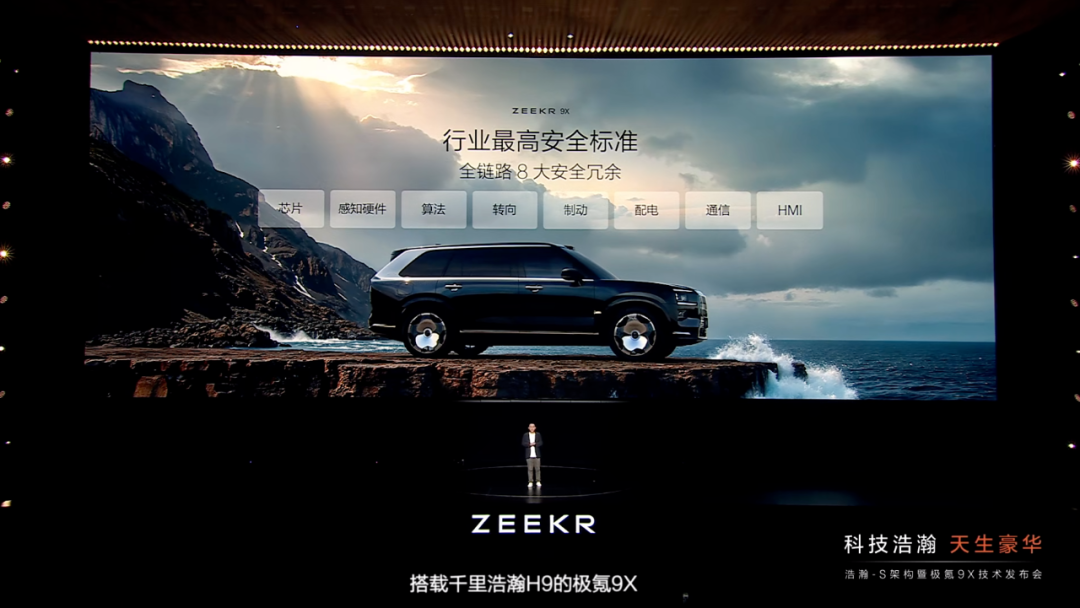
Regarding the official mass production timeline, the event remained silent, but it's likely to be in the fourth quarter or late 2025.
03 Summary
Overall, ZEEKR's L3 solution excels in both perception hardware and computing power, complemented by necessary redundancy configurations. From a hardware perspective, it is undoubtedly top-tier and fully equipped. However, stacking hardware alone does not guarantee a superior experience; software capability is now the crux. With ample hardware in place, software capability will determine the success of ZEEKR's L3 experience. This capability must address three key pain points: Decision-making anthropomorphism, ensuring the system handles situations as calmly as an "experienced driver"; Dignity during failure, reassuring users during system takeovers; OTA iteration speed, ensuring software optimization keeps pace with hardware advancements.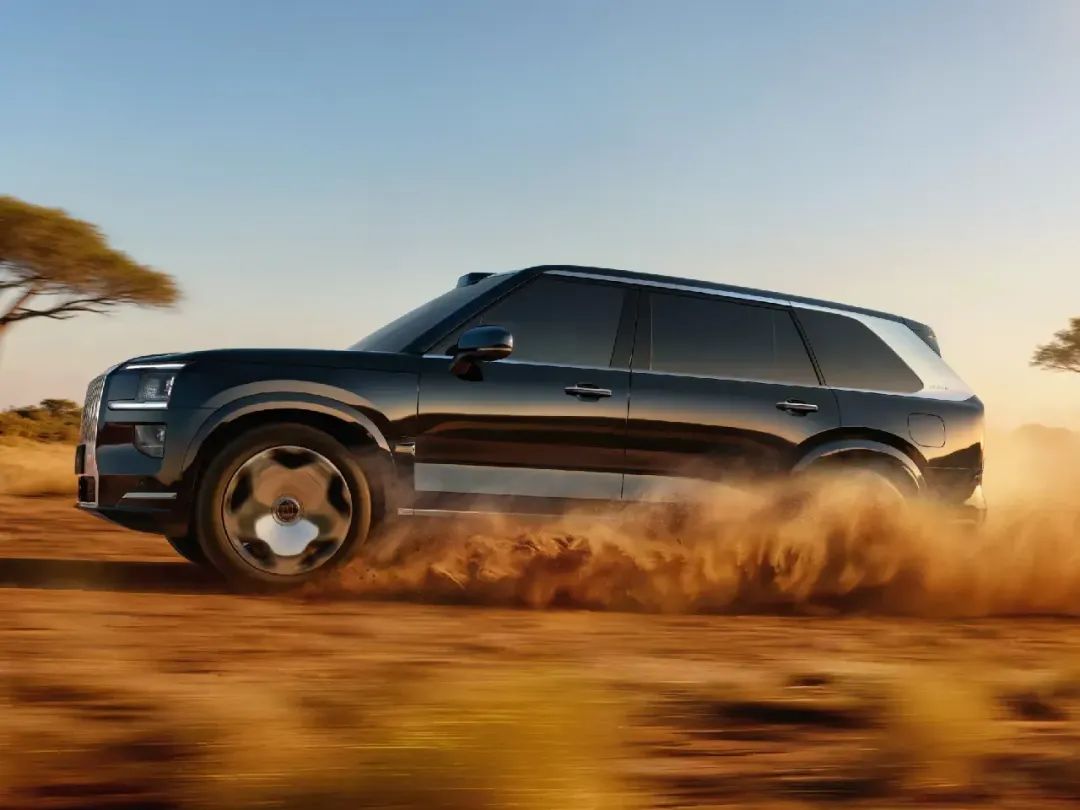 ZEEKR now stands at the pinnacle of hardware excellence. The real test lies in whether it can convince users that "these LiDARs and computing power were worth the investment" – for instance, by demonstrating fewer takeovers and more composed handling than competitors and human drivers in construction zones. Translating hardware and software parameters into user-perceptible value is crucial for the successful implementation of L3. ZEEKR is not alone in pursuing L3; GAC, Lantu, XPeng, Huawei, and others have also announced L3 mass production plans, with timelines converging in the third and fourth quarters of this year. While all parties claim excellence, the true test awaits the implementation of relevant policies and regulations.
ZEEKR now stands at the pinnacle of hardware excellence. The real test lies in whether it can convince users that "these LiDARs and computing power were worth the investment" – for instance, by demonstrating fewer takeovers and more composed handling than competitors and human drivers in construction zones. Translating hardware and software parameters into user-perceptible value is crucial for the successful implementation of L3. ZEEKR is not alone in pursuing L3; GAC, Lantu, XPeng, Huawei, and others have also announced L3 mass production plans, with timelines converging in the third and fourth quarters of this year. While all parties claim excellence, the true test awaits the implementation of relevant policies and regulations.
End.







